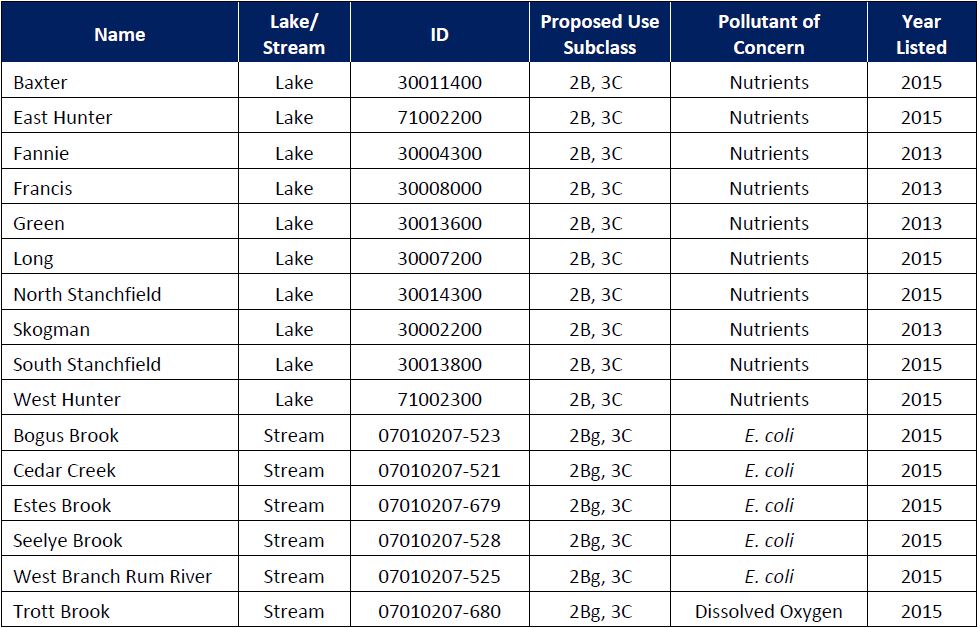The Rum River Watershed Restoration and Protection Strategy (WRAPS) is a management plan for the Rum River, and all the lakes and streams in its watershed. The process of preparing the WRAPS included extensive monitoring, modeling, stakeholder/public outreach and scientific analysis from 2013-2016. The WRAP focus is on water quality and overall ecological health. It includes strategies for fixing impaired waters that do not meet state water quality standards, as well as protecting good quality waterbodies.
The Rum River WRAPS report and accompanying Total Maximum Daily Load (TMDL) Report for impaired waters are on public notice from May 1-31, 2017. Please visit the MN Pollution Control Agency website to view the draft reports and public comment opportunities. Please note that other informative reports done as part of the WRAP process are also on the MPCA website including a groundwater report, biota stressor identification report, and monitoring and assessment report.
The WRAPS and TMDL reports are intended to be used by local water management entities, non-profits and others to guide their efforts. The WRAPS provides recommended management strategies. The TMDL provides pollutant discharge limits for regulated entities and a calculation of pollutant reductions needed from regulated and voluntary efforts in order to meet state water quality standards. Some of the entities that are updating their local water plans in 2017 include: Isanti County, Mille Lacs County, Sherburne County, and the Upper Rum River Watershed Management Organization (northern Anoka Co).
The WRAPS has two purposes: (a) improve impaired waters and (b) protect waters that are in good quality but under pressures that might result in deterioration. For improving impaired waters, the TMDL report provides waterbody-specific analysis. For protection, the WRAPS report provides recommended management strategies by region.
Impaired waterbodies with completed TMDL's include:

Other waters with impairments, many for poor biota, that were not addressed by this TMDL include:
While WRAPS management recommendations vary by region, some often-mentioned management concerns and strategies for the entire Rum River watershed included:
Riparian habitat - The Rum River is a State Wild, Scenic and Recreational River. Preservation and restoration of continuous natural vegetation within the riparian corridor and preservation of floodplains is critical to wildlife, water quality, flood abatement and the scenic nature of the river.
Protecting watershed hydrology from alteration - Similar to land use changes, alterations from ditching and other forms of drainage can have multiple impacts to downstream water resources. Maintenance of long-neglected ditches is of particular concern, as this can increase rates and volumes of runoff in ways that impact water quality, erode stream banks and increase flood risks.
Lakes - Cisco lakes, shallow wild rice lakes and recreational lakes near water quality thresholds are priorities for protection.
Land use changes - Changes in land use including forested to agriculture or agriculture to developed are anticipated to occur in the future. Modeling scenarios have been performed to estimate impacts of these conversions and should be used by local governments to mitigate these impacts.
Surface waters used for drinking - In 2009 the US Forest Service published a report titled Forest, Waters and People. This report analyzed all the watersheds in Minnesota (HUC 8) for their ability to produce clean water in relation to ownership and development pressure. In this assessment, the Rum River ranks the second most important watershed in Minnesota for drinking water supply and forested lands based upon four primary metrics - watershed ability to produce clean water, the ability of a watershed to provide drinking water to the most people, the ability of the watersheds to provide drinking water on private lands, and lastly the development pressure and land owner status.
Protecting groundwater - Portions of the watershed are important for recharge of regional aquifers, including those serving the Twin Cities metro. It is important to keep water on the land in these areas and certain areas sensitive to groundwater pollution should not host pollutant-generating facilities. Also, portions of this watershed are known to have high nitrates in the groundwater due to a combination of agricultural land use and sandy soils. The Minnesota Department of Agriculture 2013 Nitrogen Fertilizer Management Plan is the state's blueprint for prevention or minimization of the impacts of nitrogen fertilizer on groundwater.
Geographic priorities - A number of tools in the WRAP are available to help managers prioritize geographic locations for work. A summary map has also been produced.
Water quality projects are underway to begin implementing the WRAPS and TMDLs. These projects vary by area and include riverbank stabilizations, construction of improved stormwater treatment, re-meandering a 1-mile reach of river channel, habitat protection and restoration and others. Some projects are multi-county cooperative efforts. For example the Anoka and Isanti Soil and Water Conservation Districts have begun a program for riverbank stabilization by a cedar tree revetment method. Generally, the county soil and water conservation districts, counties, cities, and The Nature Conservancy are central players in this work.
Other Information about the Rum River WRAP Project
League of Women Voters Meeting Video about Water and the Rum River
Rum River WRAP Video
Story Map (an interactive map-based presentation of the project)
Watershed map with monitoring sites
Minnesota Pollution Control Agency
Contact Person:
